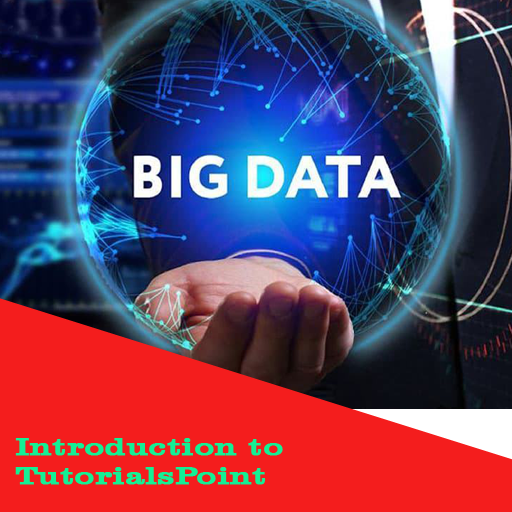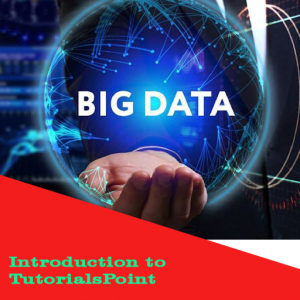Benefits of Learning Big Data Analytics on TutorialsPoint
TutorialsPoint is a popular online platform that offers a wide range of tutorials, courses, and e-books on various topics, including programming, web development, and data science. In this article, we will explore the Big Data Analytics TutorialsPoint section and why it is an excellent resource for anyone looking to learn about big data analytics.
Introduction to TutorialsPoint
TutorialsPoint was founded in 2006 and has since grown to become one of the most popular online learning platforms. It offers a vast collection of tutorials and courses on a wide range of topics, including big data analytics. The platform is easy to navigate and offers a wealth of information for learners of all skill levels.
Big Data Analytics Tutorials on TutorialsPoint
The Big Data Analytics section on TutorialsPoint offers a comprehensive guide to learning about big data analytics. The section is divided into several sub-sections, including Big Data Overview, Hadoop, MapReduce, HDFS, Pig, Hive, HBase, NoSQL, and Spark.
The Big Data Overview sub-section provides an introduction to big data analytics, including the definition of big data, its characteristics, and the challenges associated with analyzing it. It also covers the various tools and technologies used in big data analytics, such as Hadoop, MapReduce, and Spark.
The Hadoop sub-section provides an in-depth guide to the Hadoop framework, including its architecture, installation, and configuration. It also covers the various components of Hadoop, such as HDFS, MapReduce, and YARN.
The MapReduce sub-section covers the MapReduce programming model, which is used for processing large data sets. It explains how MapReduce works and provides examples of how to use it for data analysis.
The HDFS sub-section covers the Hadoop Distributed File System, which is used for storing and managing large data sets. It explains the architecture of HDFS and how to set up and configure it.
The Pig sub-section covers the Pig Latin scripting language, which is used for data analysis on Hadoop. It provides an introduction to Pig Latin and explains how to use it for data analysis.
The Hive sub-section covers the Hive data warehouse system, which is used for querying and analyzing large data sets stored in Hadoop. It provides an overview of Hive and explains how to use it for data analysis.
The HBase sub-section covers the HBase NoSQL database, which is used for storing and managing large data sets in Hadoop. It provides an overview of HBase and explains how to use it for data analysis.
The NoSQL sub-section provides an introduction to NoSQL databases, which are used for storing and managing unstructured data. It covers the various types of NoSQL databases and their characteristics.
The Spark sub-section covers the Spark cluster computing framework, which is used for processing large data sets. It provides an overview of Spark and explains how to use it for data analysis.
Benefits of Learning Big Data Analytics on TutorialsPoint
There are several benefits of learning big data analytics on TutorialsPoint. Firstly, the platform offers a comprehensive guide to learning about big data analytics, covering a wide range of topics and technologies. This makes it an excellent resource for anyone looking to learn about big data analytics, whether they are a beginner or an experienced data analyst.
Secondly, TutorialsPoint is easy to navigate, with a clear and concise layout. This makes it easy to find the information you need quickly and efficiently.
Thirdly, TutorialsPoint offers a wide range of tutorials and courses on other topics, such as programming and web development.
Big Data Analytics Tutorials on TutorialsPoint
In the rapidly evolving field of data analytics, understanding and mastering big data analytics is crucial for leveraging the vast amounts of information that organizations collect. TutorialsPoint, a prominent online learning platform, offers a comprehensive set of tutorials on big data analytics that cater to both beginners and advanced users. This article provides an overview of what you can expect from the Big Data Analytics tutorials on TutorialsPoint, highlighting the key topics covered, learning benefits, and how these resources can enhance your big data skills.
1. Introduction to Big Data Analytics
Overview: The introductory tutorials on TutorialsPoint set the foundation for understanding big data analytics. They cover the essential concepts, technologies, and challenges associated with big data.
Key Topics:
- Definition of Big Data: Explains what constitutes big data and its key characteristics—volume, velocity, variety, and veracity.
- Importance of Big Data Analytics: Discusses why big data is critical for modern businesses and how analytics can drive decision-making.
- Big Data Technologies: Provides an overview of technologies like Hadoop, Spark, and NoSQL databases that are pivotal in handling big data.
Benefits:
- Foundational Knowledge: Gain a solid understanding of big data fundamentals, which is essential for delving into more complex topics.
- Technology Overview: Familiarize yourself with the key technologies used in big data analytics.
2. Hadoop and MapReduce
Overview: Hadoop is a cornerstone of big data processing, and the tutorials on TutorialsPoint offer in-depth coverage of Hadoop and its data processing model, MapReduce.
Key Topics:
- Hadoop Architecture: Covers the core components of Hadoop, including HDFS (Hadoop Distributed File System) and YARN (Yet Another Resource Negotiator).
- MapReduce Programming Model: Explains how the MapReduce framework processes large datasets by dividing tasks into smaller sub-tasks.
- Hadoop Ecosystem: Introduces additional tools and frameworks within the Hadoop ecosystem, such as Pig, Hive, and HBase.
Benefits:
- Hands-On Experience: Learn to work with Hadoop and MapReduce through practical examples and exercises.
- Understanding Ecosystem: Gain insights into the broader Hadoop ecosystem and its components.
3. Apache Spark
Overview: Apache Spark is a powerful alternative to Hadoop for big data processing, known for its speed and ease of use. TutorialsPoint provides tutorials on how to leverage Spark for big data analytics.
Key Topics:
- Spark Basics: Covers the fundamentals of Apache Spark, including its architecture and core components like Spark Core, Spark SQL, and Spark Streaming.
- RDDs (Resilient Distributed Datasets): Explains the concept of RDDs and how they facilitate distributed data processing.
- Spark SQL and DataFrames: Introduces Spark SQL for querying structured data and DataFrames for handling distributed collections of data.
Benefits:
- Performance Insights: Understand the performance advantages of Spark over traditional big data frameworks.
- Practical Skills: Develop practical skills in using Spark for real-time and batch processing tasks.
4. NoSQL Databases
Overview: NoSQL databases are designed to handle unstructured and semi-structured data at scale. TutorialsPoint offers tutorials on various NoSQL databases that are essential for big data analytics.
Key Topics:
- Introduction to NoSQL: Provides an overview of NoSQL databases and their advantages over traditional relational databases.
- Types of NoSQL Databases: Explains different types of NoSQL databases, including document stores (e.g., MongoDB), key-value stores (e.g., Redis), column-family stores (e.g., Cassandra), and graph databases (e.g., Neo4j).
- Use Cases: Discusses the use cases for different types of NoSQL databases and how they can be applied to big data problems.
Benefits:
- Diverse Knowledge: Gain knowledge of various NoSQL databases and their specific use cases.
- Data Handling: Learn how to handle and analyze different types of unstructured and semi-structured data.
5. Data Warehousing and ETL Processes
Overview: Data warehousing and ETL (Extract, Transform, Load) processes are crucial for organizing and preparing data for analysis. TutorialsPoint provides tutorials on these critical aspects of big data analytics.
Key Topics:
- Data Warehousing Concepts: Covers the basics of data warehousing, including data marts, OLAP (Online Analytical Processing), and data modeling.
- ETL Processes: Explains the ETL process and how it is used to move and transform data from various sources into a data warehouse.
- Tools and Technologies: Introduces popular ETL tools and data warehousing technologies.
Benefits:
- Comprehensive Understanding: Develop a comprehensive understanding of data warehousing and ETL processes.
- Practical Tools: Learn about practical tools and technologies used in data warehousing and ETL.
6. Machine Learning and Advanced Analytics
Overview: Machine learning and advanced analytics are becoming integral to big data analytics. TutorialsPoint includes tutorials on applying machine learning techniques to big data.
Key Topics:
- Machine Learning Basics: Introduces fundamental concepts in machine learning, including supervised and unsupervised learning.
- Algorithms and Models: Covers common machine learning algorithms and models used for predictive analytics and data mining.
- Integration with Big Data: Explains how machine learning models can be integrated with big data platforms like Hadoop and Spark.
Benefits:
- Advanced Skills: Acquire skills in machine learning and advanced analytics techniques.
- Practical Application: Learn how to apply machine learning models to large datasets for deeper insights.
7. Real-Time Data Processing
Overview: Real-time data processing is essential for applications requiring immediate insights. TutorialsPoint offers tutorials on technologies and methods for processing data in real time.
Key Topics:
- Real-Time Analytics Tools: Discusses tools and frameworks for real-time data processing, such as Apache Kafka and Apache Storm.
- Stream Processing: Explains stream processing concepts and techniques for analyzing data as it is generated.
Benefits:
- Timely Insights: Understand how to process and analyze data in real time, which is crucial for applications like fraud detection and live monitoring.
- Tool Proficiency: Gain proficiency with tools designed for real-time data processing.
8. Data Visualization
Overview: Data visualization helps in interpreting complex datasets through graphical representations. TutorialsPoint provides resources on creating effective visualizations for big data.
Key Topics:
- Visualization Techniques: Covers various techniques for visualizing big data, including charts, graphs, and interactive dashboards.
- Tools and Platforms: Introduces popular data visualization tools such as Tableau and Power BI.
Benefits:
- Enhanced Interpretation: Learn how to effectively visualize and communicate complex data insights.
- Tool Mastery: Develop skills in using leading data visualization tools.
Conclusion
The Big Data Analytics tutorials on TutorialsPoint offer a comprehensive learning path for mastering the complexities of big data. From foundational concepts and technologies to advanced analytics techniques, these tutorials provide valuable resources for learners at all levels.
By leveraging these tutorials, you can develop a deep understanding of big data analytics, acquire practical skills, and stay ahead in the ever-evolving field of data science. Whether you are just starting out or looking to enhance your existing knowledge, TutorialsPoint offers a wealth of information to support your big data analytics journey.

